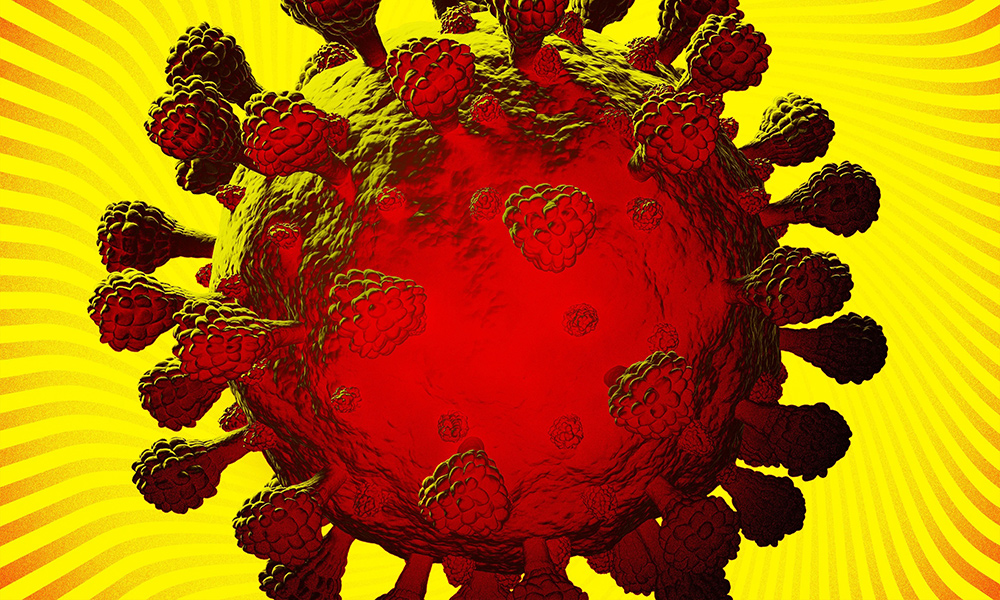
专家们正在密切关注新型奥密克戎变异毒株XBB.1.5,在推特空间(Twitterverse)上被称为“海妖病毒”,由于其“免疫逃脱株”的特性和超强传播力,专家们担心它可能引发下一波疫情。
世界卫生组织(World Health Organization)的新冠响应技术主管玛丽亚·范·克尔克霍夫于1月4日在新闻发布会上称,世界卫生组织的病毒进化技术顾问小组正在对该变异毒株进行风险评估。这是到目前为止传播力最强的新冠病毒变异毒株。自从XBB.1.5在欧洲部分国家和美国东北部地区“快速取代其他变异毒株”以来,世界卫生组织还要求美国疾病控制与预防中心(U.S. Centers for Disease Control and Prevention)报告出现新变异毒株的风险。
这两份报告预计将在未来几天发布。目前,专家们主要担心XBB.1.5变异毒株可能快速传播,并超过其他奥密克戎病毒株。
研究人员正在研究XBB.1.5是否具备其他令人担心的属性,例如引发更多重症的能力。范·克尔克霍夫表示,到目前为止还没有这方面的证据。
但目前已经确定的是,XBB.1.5正在延续奥密克戎变异毒株增殖变异毒株的传统,新的变异毒株更容易传播,并且可以逃脱先前感染和接种新冠疫苗形成的免疫力。以下是我们对最新奥密克戎病毒株到目前为止已知的信息。
XBB.1.5在什么时间和什么地点被发现?
虽然XBB.1.5最近才开始在全球快速传播,但它其实已经存在了一段时间。据欧洲疾病预防与控制中心(European Centre for Disease Prevention and Control)透露,XBB.1.5最早在2022年10月被发现。
XBB.1.5如何进化?
XBB.1.5是两种奥密克戎BA.2子变异毒株的再组合或组合体,BA.2在实验室里很难将其与德尔塔变异毒株区分开来,因此被称为“隐形奥密克戎”。
目前哪些国家发现了 XBB.1.5?
到目前为止,美国新变异毒株感染者的人数增加最明显。上周,美国疾病控制与预防中心预测,在区域1和区域2,包括康涅狄格州、缅因州、马萨诸塞州、新罕布什尔州、罗德岛、佛蒙特州、纽约州、新泽西州、波多黎各和美属维尔京群岛,新变异毒株占总感染人数的75%。新变异毒株预计约占全国总感染人数的41%。
据世界卫生组织称,在一些欧洲国家,XBB.1.5病例也在快速增多。根据欧洲疾病预防与控制中心的数据,目前已经有25个国家报告了该变种毒株,包括丹麦、法国、奥地利、荷兰、德国、意大利、西班牙、瑞典、冰岛、比利时、捷克、葡萄牙和爱尔兰。
为什么人们对它感到担忧?
目前,专家们重点关注的是该变异毒株相对于其他奥密克戎病毒株的增长优势。在美国,2022年12月初,XBB.1.5病例预计仅占总感染病例的约1%。一个月后,该比例提高到40%。
世界卫生组织的官员称,XBB.1.5不只是到目前为止传播力最强的新冠变异毒株,它还特别容易与被其感染的细胞结合。这种特性使病毒很容易在宿主体内复制,这可能引发更多重症。世界卫生组织的官员于1月5日表示,但到目前为止还没有这方面的证据。
它是否正在导致住院人数和死亡病例增多?
现在尚无法确定。范·克尔克霍指出,在XBB.1.5快速传播的美国东北部地区,住院人数确实在增多。世界卫生组织还在1月5日表示,过去一个月全球新冠死亡病例增加了20%。但她说,这些趋势背后的原因仍然是未知数。这或许都是由于在节日期间,因聚会通常会发生的传播加快,并不一定意味着出现了令人担忧的新病毒株。(财富中文网)
译者:刘进龙
审校:汪皓
专家们正在密切关注新型奥密克戎变异毒株XBB.1.5,在推特空间(Twitterverse)上被称为“海妖病毒”,由于其“免疫逃脱株”的特性和超强传播力,专家们担心它可能引发下一波疫情。
世界卫生组织(World Health Organization)的新冠响应技术主管玛丽亚·范·克尔克霍夫于1月4日在新闻发布会上称,世界卫生组织的病毒进化技术顾问小组正在对该变异毒株进行风险评估。这是到目前为止传播力最强的新冠病毒变异毒株。自从XBB.1.5在欧洲部分国家和美国东北部地区“快速取代其他变异毒株”以来,世界卫生组织还要求美国疾病控制与预防中心(U.S. Centers for Disease Control and Prevention)报告出现新变异毒株的风险。
这两份报告预计将在未来几天发布。目前,专家们主要担心XBB.1.5变异毒株可能快速传播,并超过其他奥密克戎病毒株。
研究人员正在研究XBB.1.5是否具备其他令人担心的属性,例如引发更多重症的能力。范·克尔克霍夫表示,到目前为止还没有这方面的证据。
但目前已经确定的是,XBB.1.5正在延续奥密克戎变异毒株增殖变异毒株的传统,新的变异毒株更容易传播,并且可以逃脱先前感染和接种新冠疫苗形成的免疫力。以下是我们对最新奥密克戎病毒株到目前为止已知的信息。
XBB.1.5在什么时间和什么地点被发现?
虽然XBB.1.5最近才开始在全球快速传播,但它其实已经存在了一段时间。据欧洲疾病预防与控制中心(European Centre for Disease Prevention and Control)透露,XBB.1.5最早在2022年10月被发现。
XBB.1.5如何进化?
XBB.1.5是两种奥密克戎BA.2子变异毒株的再组合或组合体,BA.2在实验室里很难将其与德尔塔变异毒株区分开来,因此被称为“隐形奥密克戎”。
目前哪些国家发现了 XBB.1.5?
到目前为止,美国新变异毒株感染者的人数增加最明显。上周,美国疾病控制与预防中心预测,在区域1和区域2,包括康涅狄格州、缅因州、马萨诸塞州、新罕布什尔州、罗德岛、佛蒙特州、纽约州、新泽西州、波多黎各和美属维尔京群岛,新变异毒株占总感染人数的75%。新变异毒株预计约占全国总感染人数的41%。
据世界卫生组织称,在一些欧洲国家,XBB.1.5病例也在快速增多。根据欧洲疾病预防与控制中心的数据,目前已经有25个国家报告了该变种毒株,包括丹麦、法国、奥地利、荷兰、德国、意大利、西班牙、瑞典、冰岛、比利时、捷克、葡萄牙和爱尔兰。
为什么人们对它感到担忧?
目前,专家们重点关注的是该变异毒株相对于其他奥密克戎病毒株的增长优势。在美国,2022年12月初,XBB.1.5病例预计仅占总感染病例的约1%。一个月后,该比例提高到40%。
世界卫生组织的官员称,XBB.1.5不只是到目前为止传播力最强的新冠变异毒株,它还特别容易与被其感染的细胞结合。这种特性使病毒很容易在宿主体内复制,这可能引发更多重症。世界卫生组织的官员于1月5日表示,但到目前为止还没有这方面的证据。
它是否正在导致住院人数和死亡病例增多?
现在尚无法确定。范·克尔克霍指出,在XBB.1.5快速传播的美国东北部地区,住院人数确实在增多。世界卫生组织还在1月5日表示,过去一个月全球新冠死亡病例增加了20%。但她说,这些趋势背后的原因仍然是未知数。这或许都是由于在节日期间,因聚会通常会发生的传播加快,并不一定意味着出现了令人担忧的新病毒株。(财富中文网)
译者:刘进龙
审校:汪皓
Experts are eyeing the new Omicron strain XBB.1.5—dubbed Kraken on the Twitterverse—for its potential to cause the next major COVID wave, due to its “escape strain” properties and ultrahigh transmissibility.
The World Health Organization’s technical advisory group on virus evolution is working on a risk assessment on the variant, which is the most transmissible yet, Maria Van Kerkhove, technical lead for COVID-19 response at the World Health Organization, said at a January 4 news conference. Her organization has also asked the U.S. Centers for Disease Control and Prevention to report on the risks of the new variant, since XBB.1.5 has “rapidly replaced other variants” in some European countries and in the northeast U.S.
Both reports are expected in the coming days. Right now, experts are predominantly concerned with Kraken’s ability to quickly spread and overtake other strains of Omicron.
Researchers are looking into whether XBB.1.5 might have other concerning properties, like the ability to cause more severe disease. So far, there is no evidence of this, Van Kerkhove added.
What is known, however, is that XBB.1.5 is continuing Omicron’s legacy of spawning variants that spread—and evade immunity from prior infection and vaccination—with increasing ease. Here’s what we know so far about the latest Omicron spawn to make headlines.
When and where was XBB.1.5 discovered?
While it’s only recently taken off globally, XBB.1.5 has been around for a while. It was first detected in October, according to the European Centre for Disease Prevention and Control (ECDC).
How did it evolve?
XBB.1.5 is a “recombinant”—or combination—of two spinoffs of Omicron BA.2, which was known as “stealth Omicron” because it was difficult for labs to differentiate it from Delta.
What countries has it been located in?
So far, the U.S. is seeing the most notable growth of the new variant. Last week, the CDC projected that it comprised around 75% of infections in regions 1 and 2, which include Connecticut, Maine, Massachusetts, New Hampshire, Rhode Island, Vermont, New York, New Jersey, Puerto Rico, and the U.S. Virgin Islands. Nationally, it was projected to be behind around 41% of cases.
Some European countries are also seeing a steep rise in levels of Kraken, according to the WHO. The variant has so far been reported in 25 countries, which include Denmark, France, Austria, Netherlands, Germany, Italy, Spain, Sweden, Iceland, Belgium, Czechia, Portugal, and Ireland, according to the ECDC.
Why is it so concerning?
Right now, experts are focused on the variant’s growth advantage over other strains of Omicron. In the U.S., XBB.1.5 was projected to comprise just around 1% of cases in early December 2022. A month later, it’s projected to be behind 40% of cases.
Aside from being the most transmissible COVID variant yet, XBB.1.5 also binds extra well to the cells it infects, according to WHO officials. This quality allows a virus to replicate easily in a host, which could lead to more severe disease. But so far, there is no evidence of this, WHO officials said on January 5.
Is it causing hospitalizations and deaths to rise?
The jury is still out on this. The northeast U.S., where XBB.1.5 is thriving, is seeing an increase in hospitalizations, Van Kerkhove said. The WHO also reported a 20% increase in global COVID deaths on January 5 over the past month. But it’s unknown what’s behind the trends, she said. Both could be due to increased spread that generally occurs around holidays due to gatherings, and not necessarily indicative of a new, more problematic strain.






